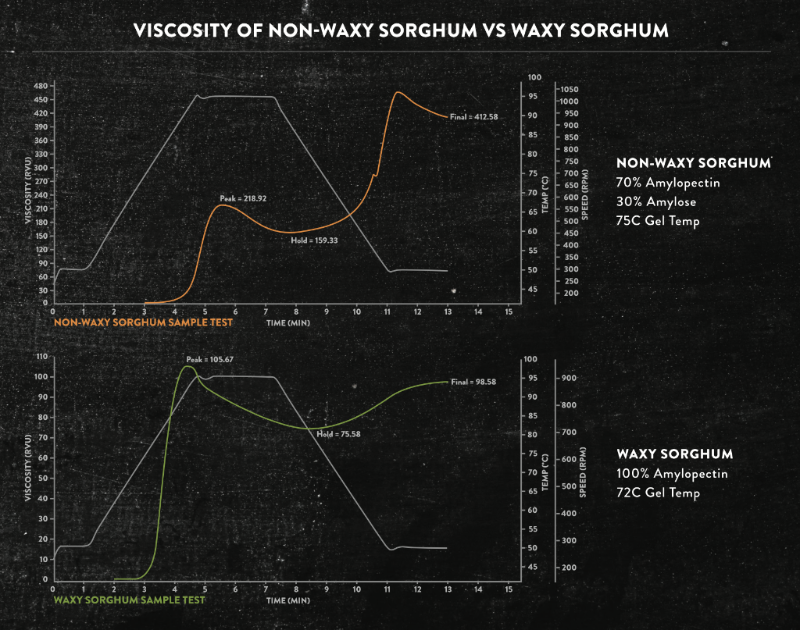
There’s no doubt, consumers are moving from looking for gluten-free products to finding gluten-free products that taste good! Many flour substitutes often leave gluten-free options tasting bland or low on substance. So, bakers are on the lookout for ingredients that improve product quality and nutrition. One option: waxy sorghum.
Sorghum is an ancient grain, first grown in Egypt and now the third largest cereal grain in the U.S. By grinding the plant’s kernel, a powder is made. This flour is gluten-free and has high levels of unique phenolic compounds—good sources of antioxidants. When used with gums and starches, this sorghum flour makes for a solid gluten replacer.
Waxy Sorghum vs. Regular Sorghum
There are now waxy sorghums available on the market that offer more advantages to simply sorghum flour. The waxy form has a thinner bran layer, lower gelatinization temperature and 100% amylopectin.
This makes it excellent for binding water, retaining moisture, opening cell structure, improving freeze/thaw stability and reducing moisture migration. It’s also ideal for clean label, minimizing the use of gums and starches and labeled as “whole grain sorghum flour.”
Helping with Viscosity
Tests have found waxy sorghum increases viscosity of dough and batter, more so than regular sorghum flour. Nulife Market conducted the following test:
“Waxy whole grain sorghum flour and regular whole grain sorghum flour were tested on a Rapid Visco Analyzer (RVA) to measure the resistance of a flour and water mixture while being stirred with a paddle. Cold viscosity, which indicates the resistance before heating, shows the state of the viscosity in a batter or dough format. As explained by the graph results below, the waxy whole grain sorghum flour (1.75 RVU) was found to be more viscous than the regular whole grain sorghum flour (1.08 RVU).”


